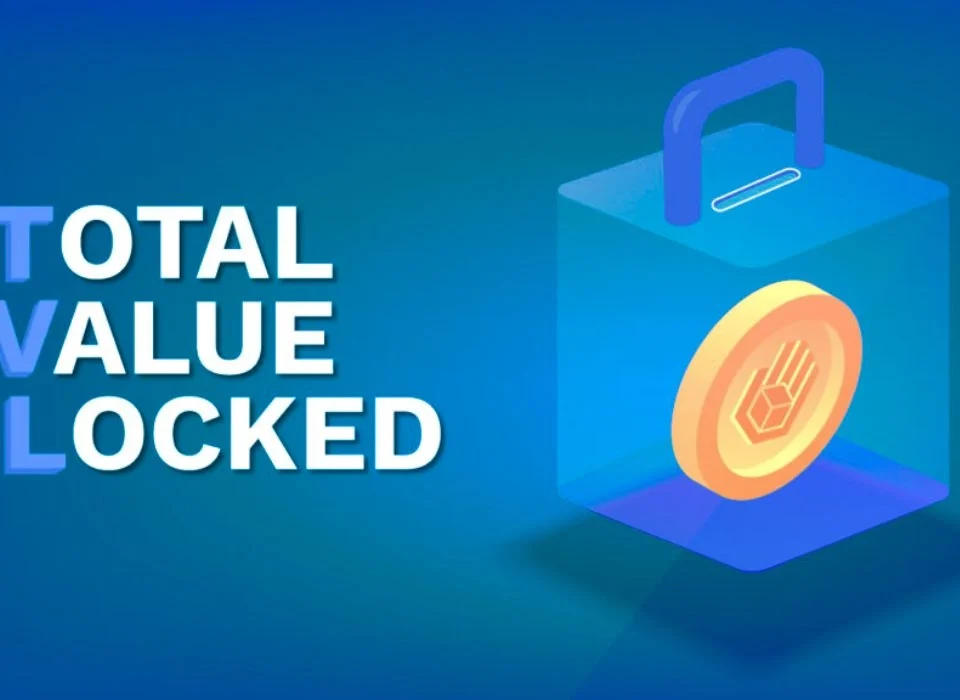
How to Use Crypto Swap Services
28/08/2024
The Risks and Rewards of Leveraged Crypto Trading
02/09/2024The Role of Cryptography in Securing Digital Assets
In today’s increasingly digital world, the importance of securing digital assets has never been greater. Digital assets, which include cryptocurrencies, digital identities, intellectual property, and sensitive data, are valuable targets for cybercriminals. Cryptography plays a critical role in protecting these assets, ensuring their confidentiality, integrity, and authenticity. This article explores the role of cryptography in securing digital assets, the different cryptographic techniques used, and the challenges and future prospects of cryptographic security.
Understanding Cryptography
What is Cryptography?
Cryptography is the science of encoding and decoding information to protect it from unauthorized access. It involves the use of mathematical algorithms to convert data into a format that is unreadable to anyone who does not have the correct decryption key. The primary goals of cryptography are to ensure:
- Confidentiality: Protecting information from being accessed by unauthorized individuals.
- Integrity: Ensuring that information has not been altered or tampered with.
- Authentication: Verifying the identity of individuals or systems involved in a communication.
- Non-repudiation: Ensuring that the sender of a message cannot deny having sent it.
Historical Context
Cryptography has been used for centuries to protect sensitive information, from ancient ciphers to modern-day encryption techniques. The advent of digital technology has revolutionized cryptography, making it an essential tool for securing digital communications and assets.
Types of Cryptographic Techniques
Symmetric-Key Cryptography
Symmetric-key cryptography, also known as secret-key cryptography, uses a single key for both encryption and decryption. This key must be kept secret and shared only with authorized parties. The primary advantage of symmetric-key cryptography is its efficiency, making it suitable for encrypting large amounts of data. However, the challenge lies in securely distributing and managing the key.
Examples:
- Advanced Encryption Standard (AES): A widely used symmetric encryption algorithm that is highly secure and efficient.
- Data Encryption Standard (DES): An older encryption algorithm that has been largely replaced by AES due to its shorter key length and vulnerability to brute-force attacks.
Asymmetric-Key Cryptography
Asymmetric-key cryptography, also known as public-key cryptography, uses a pair of keys: a public key and a private key. The public key is shared openly, while the private key is kept secret. Data encrypted with the public key can only be decrypted with the corresponding private key, and vice versa. This method is more secure for key distribution but is computationally more intensive than symmetric-key cryptography.
Examples:
- RSA (Rivest-Shamir-Adleman): A widely used asymmetric encryption algorithm that provides strong security for digital communications and transactions.
- Elliptic Curve Cryptography (ECC): A more efficient form of public-key cryptography that offers comparable security with shorter key lengths, making it suitable for use in devices with limited computational power.
Hash Functions
A hash function is a one-way cryptographic function that takes an input (or message) and produces a fixed-size string of bytes, typically a hash code or digest. Hash functions are used to ensure data integrity by producing a unique output for each unique input. Even a small change in the input will produce a significantly different hash value.
Examples:
- SHA-256 (Secure Hash Algorithm 256-bit): A member of the SHA-2 family of hash functions, commonly used in blockchain technology and digital signatures.
- MD5 (Message Digest Algorithm 5): An older hash function that is now considered insecure due to vulnerabilities but is still used in some legacy systems.
Digital Signatures
A digital signature is a cryptographic technique that provides authentication and non-repudiation. It involves creating a unique signature for a message or document using the sender’s private key. The recipient can verify the authenticity of the signature using the sender’s public key. Digital signatures are widely used in securing digital transactions, contracts, and communications.
Examples:
- DSA (Digital Signature Algorithm): A standard for digital signatures that provides authentication and data integrity.
- ECDSA (Elliptic Curve Digital Signature Algorithm): A variant of DSA that uses elliptic curve cryptography for greater efficiency.
The Role of Cryptography in Securing Digital Assets
Securing Cryptocurrencies
Cryptocurrencies like Bitcoin and Ethereum rely heavily on cryptography to secure transactions, control the creation of new units, and verify the transfer of assets. The underlying technology, blockchain, uses cryptographic techniques to ensure that transactions are immutable, transparent, and secure.
- Public and Private Keys: In cryptocurrency transactions, users have a public key (address) that is shared openly and a private key that is kept secret. The private key is used to sign transactions, providing proof of ownership and authorization.
- Hashing: Blockchain networks use hash functions like SHA-256 to link blocks of transactions together, ensuring the integrity of the blockchain. Any attempt to alter a transaction would change the hash and invalidate the entire chain.
- Digital Signatures: Digital signatures are used in cryptocurrencies to verify the authenticity of transactions and prevent double-spending.
Protecting Digital Identities
Digital identities are increasingly important in the digital economy, enabling individuals to access services, conduct transactions, and interact online. Cryptography plays a crucial role in securing digital identities and ensuring that they cannot be stolen or misused.
- Encryption: Sensitive information, such as personal data and credentials, is encrypted to prevent unauthorized access.
- Authentication: Cryptographic methods, such as multi-factor authentication (MFA) and public-key infrastructure (PKI), are used to verify the identity of users.
- Blockchain-based Identities: Some emerging solutions use blockchain technology to create self-sovereign digital identities, where individuals have full control over their personal information.
Safeguarding Intellectual Property
In the digital age, intellectual property (IP) is a valuable asset that needs to be protected from theft, piracy, and unauthorized use. Cryptography provides tools to safeguard IP in the digital domain.
- Digital Watermarking: Cryptographic techniques are used to embed digital watermarks in media files, such as images, videos, and audio, to identify ownership and prevent unauthorized copying.
- Encryption of IP Files: Files containing sensitive IP, such as research data, designs, and trade secrets, are encrypted to prevent unauthorized access and distribution.
- Smart Contracts: Blockchain technology, combined with cryptographic signatures, enables the creation of smart contracts that automatically enforce IP rights and royalty payments.
Ensuring Data Integrity and Confidentiality
Cryptography is essential for ensuring the integrity and confidentiality of data in digital communications and storage. Whether transmitting sensitive information over the internet or storing it in the cloud, cryptography ensures that data remains secure and unaltered.
- End-to-End Encryption: This ensures that data is encrypted on the sender’s side and only decrypted by the intended recipient, preventing eavesdropping and unauthorized access.
- Secure Communication Protocols: Protocols such as HTTPS, SSL/TLS, and VPNs rely on cryptography to secure data transmission over networks.
- Data Integrity: Hash functions are used to create checksums or hash values for data, ensuring that it has not been tampered with during transmission or storage.
Challenges in Cryptographic Security Quantum Computing Threat
Quantum computing poses a potential threat to current cryptographic systems, particularly those based on public-key cryptography. Quantum computers could theoretically break widely used encryption algorithms like RSA and ECC much faster than classical computers. This has led to research into quantum-resistant cryptography, which aims to develop algorithms that remain secure in the face of quantum computing.
Implementation Flaws
Even the most secure cryptographic algorithms can be undermined by poor implementation. Mistakes in coding, key management, or protocol design can introduce vulnerabilities that hackers can exploit. Ensuring that cryptographic systems are correctly implemented is crucial for maintaining security.
Human Error and Insider Threats
Cryptographic systems are only as secure as the people who use and manage them. Human error, such as mishandling private keys or falling for phishing attacks, can compromise the security of digital assets. Insider threats, where individuals within an organization misuse their access to sensitive information, also pose significant risks.
Regulatory and Legal Challenges
The use of cryptography in securing digital assets is subject to various regulatory and legal challenges. Governments may impose restrictions on the use of certain cryptographic tools or require backdoor access for law enforcement. Balancing the need for security with regulatory compliance is an ongoing challenge for organizations.
Future Prospects of Cryptography in Digital Asset Security
Post-Quantum Cryptography
As quantum computing advances, the development of post-quantum cryptography becomes increasingly important. These new cryptographic algorithms aim to provide security against quantum-based attacks, ensuring the continued protection of digital assets in a post-quantum world.
Zero-Knowledge Proofs
Zero-knowledge proofs (ZKPs) are an emerging cryptographic technique that allows one party to prove to another that they know a value or possess certain information without revealing the information itself. ZKPs have significant potential in enhancing privacy and security in digital transactions and identity verification.
Blockchain and Decentralized Security
Blockchain technology, with its reliance on cryptographic principles, will continue to play a crucial role in securing digital assets. The development of decentralized finance (DeFi), non-fungible tokens (NFTs), and other blockchain-based applications will drive further innovation in cryptographic security.
Integration with Artificial Intelligence
The integration of cryptography with artificial intelligence (AI) can enhance security by enabling smarter threat detection, automated key management, and adaptive encryption techniques. AI can help identify vulnerabilities in cryptographic systems and respond to emerging threats in real time.
Conclusion
Cryptography is the cornerstone of digital asset security, providing the tools and techniques necessary to protect sensitive information, secure transactions, and ensure trust in digital communications. As the digital landscape continues to evolve, the importance of cryptography will only grow, particularly in the face of emerging threats such as quantum computing. By staying at the forefront of cryptographic research and development, we can ensure that digital assets remain secure in an increasingly connected and digital world.



